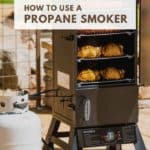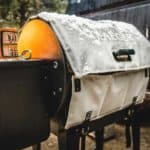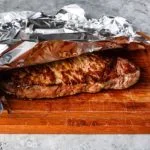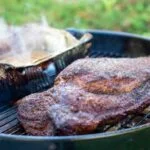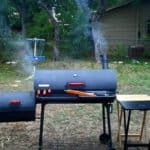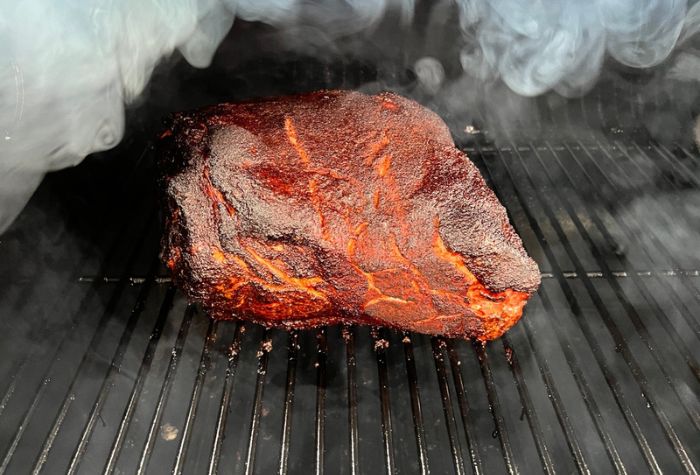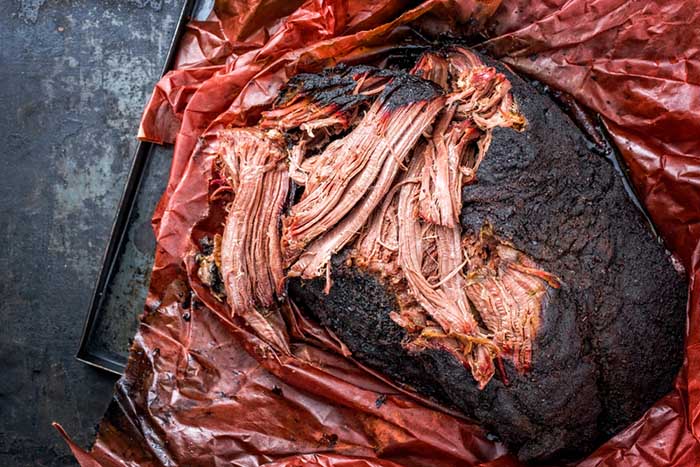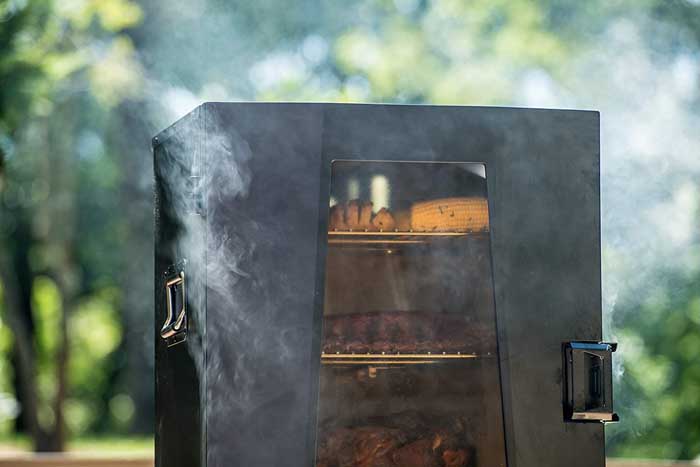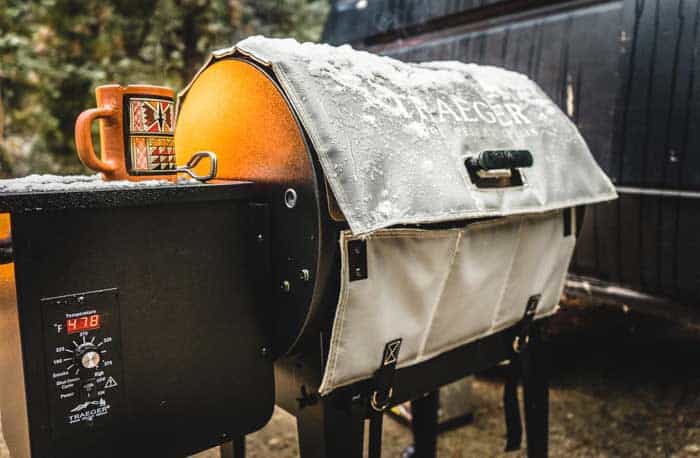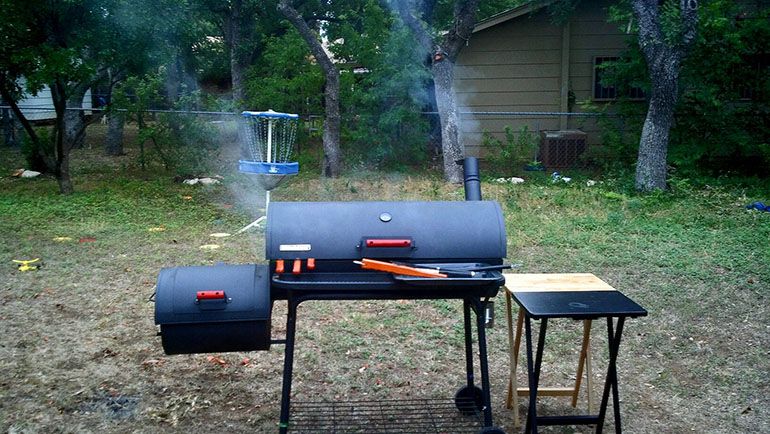Propane gas smokers have unlocked backyard barbecue for a new generation of pitmasters. Master your smoker’s ignition, temperature control, airflow, and wood chips with our guide on how to use a propane smoker.
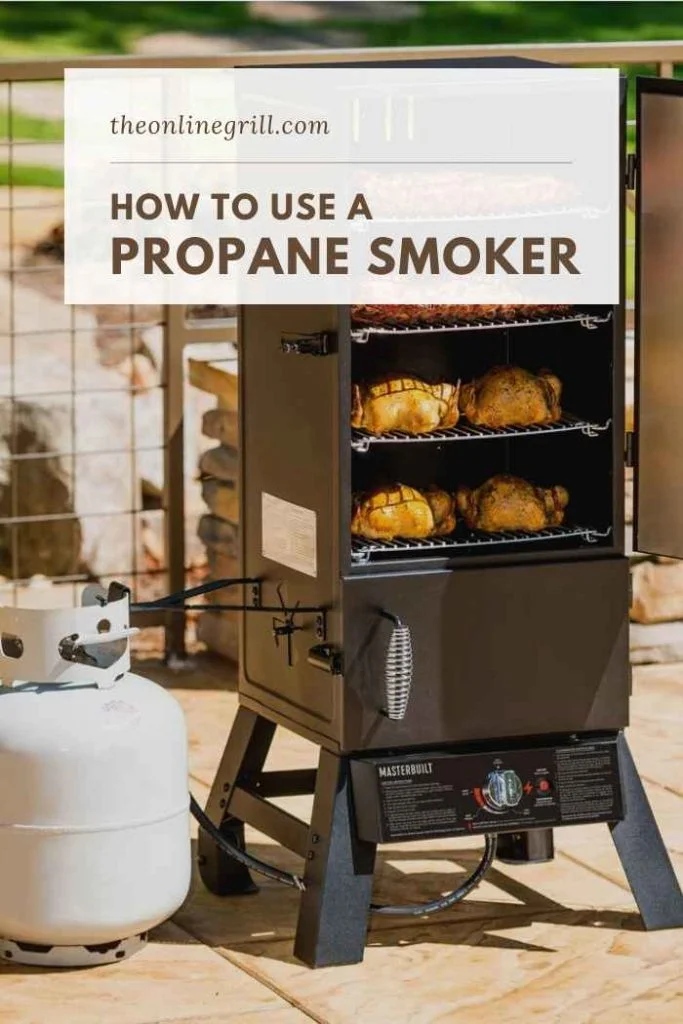
Propane smokers have opened a whole world of barbecue to newcomers. They allow an easy and quick way to create smoked food, but without the complicated problems that charcoal smokers can face.
They do away with all the stress and difficult controls, and instead allow you to smoke food in a simple, affordable way.
Our newcomers guide will walk you through exactly how to use a propane smoker, as well as give you some expert tips to make sure you get the very best results.
Choose your smoker
The best propane smokers have a large capacity, and are vertical in shape. This is to allow good airflow while also give you a lot of cooking surface area to work with.
They also have a clear control panel, and can achieve a cooking temperature of up to around 350°F. Because we’re smoking and not grilling, we don’t need excessive maximum temperatures.
I recommend the Masterbuilt MPS. It has a huge cooking capacity (792 square inches), and has an incredibly construction build to ensure excellent heat retention and smoking temperatures.
Start your smoker
Before you add any food, wet or dry wood chips, or other equipment, you will need to start up the smoker.
Ignition systems can vary from unit to unit, but generally speaking there should be a simple ignition button and temperature settings on the control display of your smoker. This type of quick startup is one of the things that sets them apart from electric smokers.
Before activating it, ensure that the connection from your propane tank is secure. We want the gas supply to be good, but also safe. Also check that the door to your smoker is firmly shut, and that your propane tank gauge is returning a good reading.
Start the heat. Aim for a target cooking temperature of 225°F (107°C). This will usually only take 10-20 minutes for your smoker to heat up to.
Prepare wood chips
Wood chips are an excellent way to enhance the flavors or your food. Popular wood chips are apple, oak, and hickory.
Many smokers come with a smoker box to hold them. Measure out about one cup of chips, and put them in the smoker box or wood chip tray.
Pro Tip: Don’t soak your wood chips. This will ruin the quality of smoke at your barbecue.
Add a water pan
Using a smoker water pan is a great way to improve the performance of your propane smoker.
They can help stabilize the cooking temperatures in the unit (even in propane smokers), while also stopping your food from drying out. The best smoked meat is always moist and rich in juices, so using a pan is a great way to ensure we get these results.
Water pans are very cheap to buy, and often come included with smoker units.
Fill the pan with plain cold water. Place the pan in your preheated smoker on the very bottom of the smoker chamber. Failing that, put it on the lowermost cooking grate.
The water in the pan will evaporate while you cook, so you might need to refill it during cooking. Try to keep an eye on it (your smoker might have a window in the door) and refill as needed.
Pro tip: Don’t use any added flavors in your water pan. Some people like to use beer, apple juice, or cider. I don’t find that it has much of an effect, so I prefer to create flavors using wood, brines or marinades alone.
Control vents and airflow
Your propane smoker may have air vents (also called dampers) included to help you manage the temperatures in your smoker. Oxygen is the main fuel for fire, so keeping on top of air regulation is crucial to good barbecue.
Your smoke should have an intake damper at the bottom that allows air into the smoker; and an exhaust damper at the top that draws air out of the smoker. In simple terms, the wider your air vents are, the more oxygen will be fed to your flames and the hotter your cooking temperatures will be.
When you start your smoker, set the vents completely wide open. This will help your smoker reach 225°F quickly.
Once it has preheated, set the vents to halfway closed. This will help stop the acceleration in cooking temperature without extinguishing it.
Pro tip: Each smoker is different, so there will be a learning curve in knowing exactly how to set your vents to achieve good heat levels. Don’t be afraid to experiment and learn how small changes to the vents affect your cooking environment.
Add your food
Now onto the real fun.
Transfer your food to your smoker, placing it on the middle grates in the cooking chamber. Aim to place it directly above the water pan so that any juices or run-off can infuse the smoke from the pan with added flavor.
Close the chamber door and leave to smoke for 225°F. Cooking times will depend on meat and weight, so check out my guide on best smoking meats for timing guides.
Don’t constantly check on the progress of your food. As tempting as it might be to open the door to see how it’s getting on, this can significantly disrupt cooking temperatures and possibly ruin your meat.
Pro tip: Allow your meat to rest at room temperature for at least 30 minutes prior to smoking. This can help improve results by minimizing the temperature swing as it cooks.
Check wood chips and water
Check on your food after 2 hours (waiting until this time period is often referred to as The Golden Rule). Check that the temperature reading on the smoker is displaying a reading close to 225°F.
Check to see if your wood chip box or water pan are nearly empty, and refill as needed.
Close the door and allow your meat to finish smoking.
Check the meat
As the target time for your meat approaches, use a meat thermometer to check on the progress of your meat. Do this by inserting the probe into the thickest part of the meat.
Once the meat’s done, remove it from the smoker and leave it to rest for 5-10 minutes before serving up.
Do you soak wood chips for a propane smoker?
No, do not soak your wood chips. There is a lot of debate among smoking fans around wood chip smoking, with many claiming that it helps to generate more smoke and can help temper the effects of exposure to high heats. This might be a solid argument when using a charcoal or offset smoker, but when the excellent temperature control you get with propane smoking means that this isn’t necessary.
Pre-soaking wood chips can generate gray or black smoke, which can be harmful to cook with. With propane smoking, we want to achieve a layer of thin, blue smoke. Using dry chips is the best way to ensure this.
To read a full discussion on the practice, check out my post on soaking wood chips in an electric smoker.
